By Lindsey Slaby, Brand Marketing Advisor and Founder, Sunday Dinner.
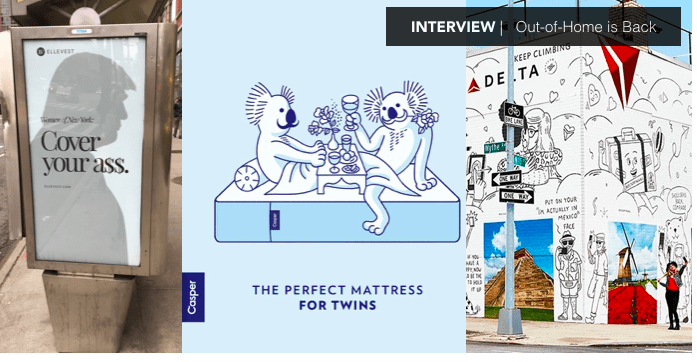
Smart + bold outdoor creative is heating up NYC streets. I’ve recently become obsessed with it. Not only because it’s gotten way more interesting — but because I never realized how accessible it could be.
There’s also a pattern in certain types of brands using it. Growth brands. Those who are past their Seed / Series A. The kinks are worked out. They want to show texture and offer credibility to the brand. These places are ready to recruit more people to their platform — from finance planning to lip gloss start-ups.
I started to wonder — just how are these companies affording to make these buys? Are they wasting their money?
I sat down with a partner I often work with, Clint White of WiT Media in NYC. His team is sort of the “OG” go-to for local out-of-home (OOH) campaigns. They know everyone. In every major city. And for OOH, that’s a big part of the equation.
So to start off, help me level set, what is the lay of the land when it comes to OOH in urban markets?
Well, first off the usage is growing. But what’s most interesting is who is using it. Lots of emerging brands. From Justworks to Haven Life to Lola. It helps them feel real.
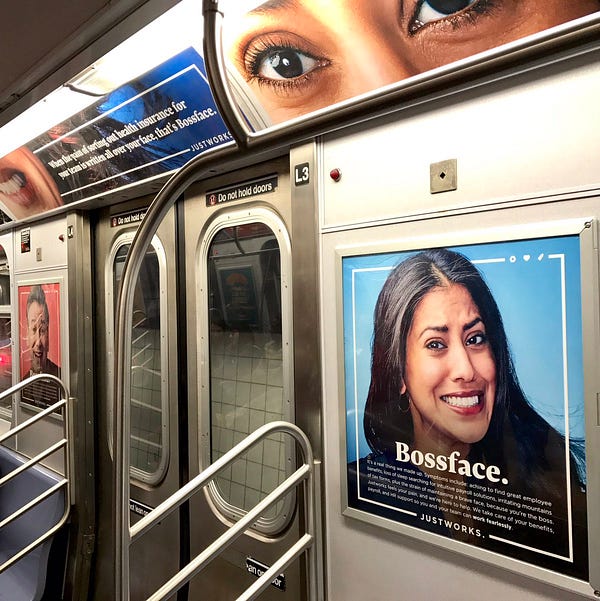
On the established side, brands like Delta, Perrier and Spotifyare really flexing new creativity in massive takeovers and artist integrated murals.
We’re in a world where new creative formats, digital tie-in, and hyper targeting are all coming together to produce a lot of head turning placements. The media nerd in me feels there has never been a better time to make OOH work for you.
What are the top trends at a glance?
- It’s consolidating — New networks help us buy in mass and connect offline to digital (mainly mobile). It’s also enabling us to have a deeper conversation about attribution.
- There is more of it — Digital OOH inventory is growing as cities grow and public transportation booms, & is moving to a programmatic buying model.
- It’s connected — Cities are getting smarter and everything from newsstand kiosks to transit will be wired soon, allowing streaming content and real-time purchase moments. (Great AdAge article to read on this.)
- The creative canvas is changing — There are far more storytelling opportunities today because we have animation, responsive, and dynamic units on the rise. The New York Times campaign from Droga5 proved this. Super simple execution but, with animated and contextually relevant text, it told powerful stories.
In general, we can be incredibly tuned into the people, place, and moment where messages are being interacted with. Layer on top of that real time data feeds such as weather, traffic or neighborhood info and you can make incredibly powerful and resonant advertising with OOH.
I think a trend we set is the role of urban planners within a media planning operation. At WiT we’re not just buyers. Jessica who works on our team is an urban planner. She’s critical to how we design strategies. She brings to each discussion detailed ways of thinking about the nuances of things like the community and transportation infrastructure with a lens of behavior that helps not only our planning but also the creative development. She’s a big part of what makes our work — work.
In NYC, I feel like I see so many more emerging brands using OOH as a channel. And for me, it’s working. My friends and clients all talk about it. Why are we seeing this surge?
It’s a great channel. Always has been. I think the creative opportunities have really gotten better & different types of brands are embracing it. Particularly the online brands who are looking to go offline in a big way. These guys are going off screen to gain resonance through different channels & creative formats. And are on the hunt to connect with their core demo — a young professional in an urban setting using the infrastructure of the city in your daily life. Companies who want to speak to you are digital services like Jet.com, Venmo, Justworks, Oscar, and NerdWallet.
Since there’s been such a cultural shift with younger people staying in urban areas, it also opened the door for brands like Lola, Thinx, Casper, Canaryand Glossier to also tap into OOH as they look to find new audiences while also building brand awareness in emerging markets — as part of a test or growth strategy. (Great AdWeek Article about Millenials loving captivating subway activations in NYC.)
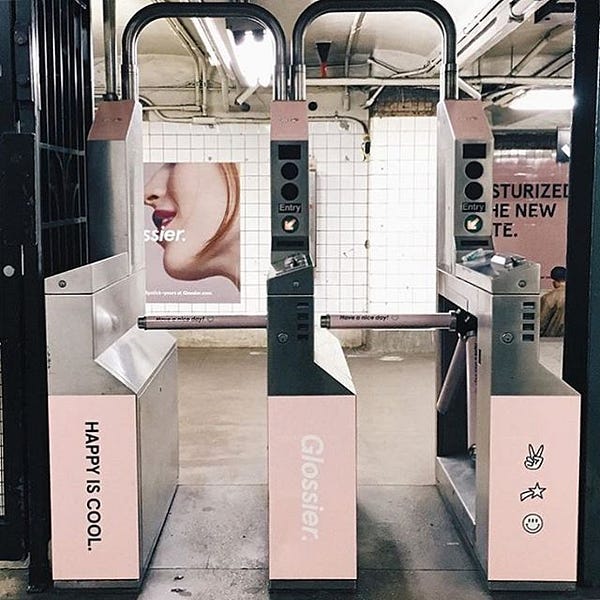
Beyond brands realizing that OOH is going to hit the people they want, we’re in a time where the data we can apply to those placements and the creative canvas is unlike it’s ever been — both digital & analog.
If you live in Brooklyn, you can’t miss the things Delta is doing with murals in Williamsburg — some in combination with Tinder. This is high impact OOH generating huge organic conversation and awareness. The walls make you stop and look.
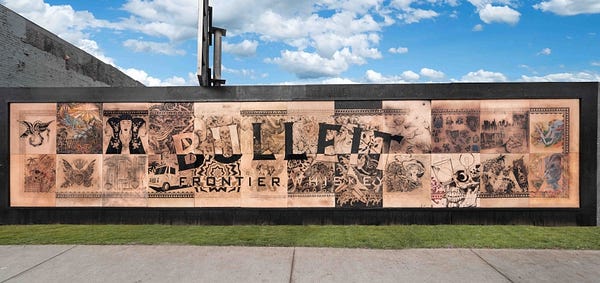
If you are in LA, you might have spotted the Bulleit (Bourbon) work:a stunning 30 foot wall of tattooed leather hides that created a highly stylized ad that was effectively a gallery-quality art installation by BFG & Milk.
Last fall we helped online life insurance company, Haven Life, wrap buses in Philadelphia with creative messaging to make people stop and think about mortality. Provocative, yes? But a spot on high-impact format that sparked conversation.
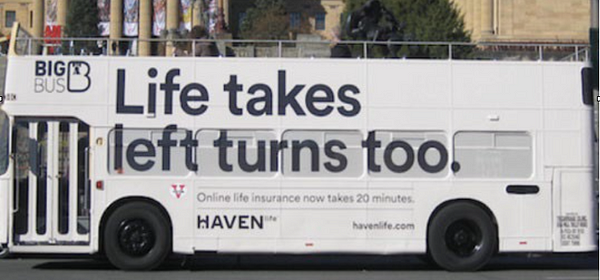
So, do you see these emerging brands going all in on OOH only?
Should it be the only channel you execute on? No. It’s a lever and we need to know where in the consumer mindset and brand growth cycle to pull it. So if your total budget is modest (< $500K) and a goal is to drive direct sales — may not be the core channel to do the job solo, but supports whole brand growth. We need to always think about the full comms strategy mapped to our customer journey. But, if you have a decent budget, OOH can be a great addition to your mix to help you gain awareness in a saturated way to fuel WOM and brand recall.
So, what if I have pulled $300,000 out of my plan and want to spend it on OOH in New York City. How might you guide me?
Ok, this is going to be all hypothetical. It really does depend on the goals — but I am going to guess you need awareness. NYC has lots of unique channels and creative formats for OOH, so the focus here is all on targeting: Who do we want to reach, in what mindset, and where do they pass through during a day? How can we create those perfect messaging moments with the right audience?
WiT works a lot with companies that are generally spending < $1M on a campaign. So this is our sweet spot.
We’d start with setting the timing. The best “test period” is normally 12 weeks, but for this budget, we would say you could run for 8 weeks.
My strategy would be half subway and use the other half for a mix of targeting on the street level in areas where your target lives or works.
- Subway: You won’t be able to do a ½ brand train as that would run about $300K — $350K for 4 weeks. What we would recommend in this scenario is Cards & Posters where you could get a package for $50K — $70K/month.If video content is key — the digital platform units cost $25k/month and can help tell a richer story.
- Street Level: I’d do a mix of bus shelter and newsstands. Premium with a mix of print and digital. Be careful on remnant cheaper buys, we want high impact. This would run around $50K — $80K for 10 great units/month.
- Bonus Areas: With the right creative, we can also scout murals which could run about $30K/ month. This is all dependent on place & relationship but adds a great creative canvas. You can also activate with sampling close by. If the timing is right and it makes sense, Times Square could be perfect for you. Many think it’s too expensive, however, there are ways of negotiating a $75k unit down to $15k with the right timing. If you are targeting B2B — use Captivate. There’s always good formats that pop if we’re hunting.
So all in all — a simple execution focused in a few areas should get the exposure and data points you are looking for. Then go from there.
Side note. Two years ago Sunday Dinner + Street Attack worked on a collaboration with SeaDoo and commissioned DabsMyla and GregMike to create for us at Wynwood (Miami’s chic art district).
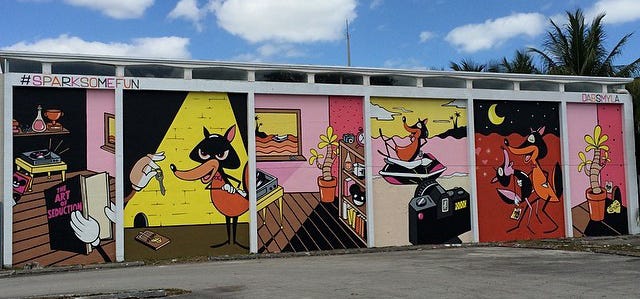
We ended up scoring two new walls that were up for the campaign and at least 6x more than we paid for as a value add. Amazing UGC came from it generating lift. For under $100K investment. You simply can’t beat that. I’m a believer in relationships getting you the best deals.
I see a lot of promo codes on OOH. Some are long and confusing. There’s no way I will remember those when I get home. Do these work? Are they worth it?
We’ve done a lot of custom codes on printed OOH that are SUPER segmented. Even by subway route. To be honest, it’s rare that a discount code or offer will translate into valuable trackable attribution metrics. They also mean a lot of work on the creative production side driving up time + money. Codes are always an imperfect tool driving people offline to online. Mostly because the media is being used to introduce a new product or service, as opposed to one that is intended to convince/convert new customers to sample alternatives.
My advice to clients is always “We want people to remember your name.” Brand recall. Get people to say “I’m going to try that!” You can most likely just do that with your creative and the exposure of your name.
If conversion oriented measurement is critical, I’d suggest looking at geofencing. Pass a newsstand, get a complementary mobile ad later. With wi-fi being embedded deeper into city infrastructures, we can do a lot of things to drive a “see it, buy it now” message with unique offers.
And perhaps the best reason: It works.We can track website traffic increases to our OOH advertising in specific geographies. — Matt Sraz, CEO of Namely(Digiday)
How often do companies call WiT simply asking how much taxi tops or a subway buy will cost?
If I had a dollar for every… Ha. Just kidding. It happens all the time. OOH feels like this uncharted territory to emerging brands and many creative agencies. If you are in urban areas, OOH is turning over quickly and there’s powerful creative in market keeping people talking and thus wondering “how much are they paying? If they can do it, can/should we?”
Personally, I love this call. I love outdoor marketing and want to collaborate upstream to help people understand all the opportunities. We often pop in to brief creative teams on placements, formats, and unique ad features. Together we can co-create powerful stuff.
Over the years we’ve created a few media scoping tools we shoot over to potential partners to get a good idea of general costs and opportunities in given markets. This can be used to quickly assess options to feed into their creative process. I think once people realize just how much they can do with a modest budget it helps to trigger innovative thinking & excitement.
What are some musts that we need to think about before doing an OOH campaign?
- Be clear about goals — what OOH can + can’t do. We often help clients define these.
- Understand the audience(s), context & surrounding of the placement(s) to shape creative concepts.
- Try to find people at a few moments in their day. What are the paths from the subway to grab a coffee to the office and home?
- Have fun with your creative. You want to be memorable.
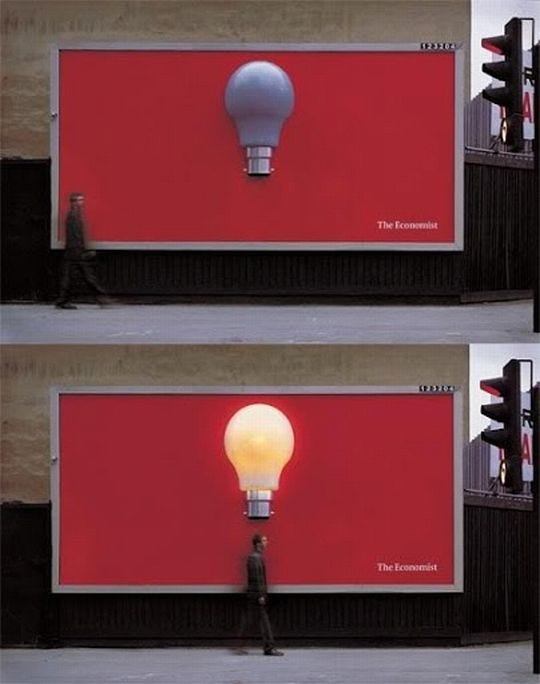
- What’s the next step on the consumer journey? Do we want units that can feed into online retargeting?
And most importantly, consider integration opportunities for all your other channels. OOH needs to connect to a larger story that includes digital, editorial, and social elements. Dial up different elements at different times to test channel performance, but when doing OOH, never go dark or fully ignore your digital channels.
What would you leave as key takeaways for emerging brands in relation to OOH?
The cost barrier is not what you think. Yes, digital can often seem cheaper, but it’s laden with fraudulent issues and the more targeted you get the more the cost goes up. For insurance & financial service companies, certain keywords can be in the hundreds for one click. With OOH, you can half that, or even quarter it with larger volume buys.
In the beginning, it helps to think about your long term plans. If you are launching in one market, do you plan to go to another? By knowing this, it can help get leverage on the rate. With Jet.com, we got these amazing Double Decker bus deals that, put them in 10 markets over 8 months at over a 75% discount — and NYC was included!
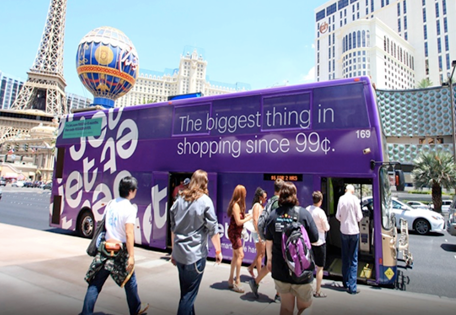
With so much of our lives happening on a screen and online, the need to build smart offline awareness has maybe never been stronger. Out-of-home happens in the real world — and as a medium, with the right targeting, creative, and messaging — it can elevate a brand from fleeting start-up to household name.
Have fun with it.
About WiT Media
WiT is a full-service boutique media agency out of NYC servicing clients nationwide. They are built for brands with modest media spends who want to do more with less. They work directly with brands like Jet.com, Haven Life, Luxury Retreats, Qapital, Try the World, AwesomenessTV, American Museum of Natural History, and Teladoc. They also serve as a “snap on” media department for today’s leading creative agencies. Shoot them a note to find out how they help agencies quickly evaluate OOH concepts & budgets.
Sunday Dinner is a connecting fiber orchestrating new creative processes between big name brands, technology partners, media, and independent agencies. Our brand consultancy helps marketers cast resources both internally and externally with the pursuit of creating breakthrough solutions. And yes, there are dinners 🙂
















